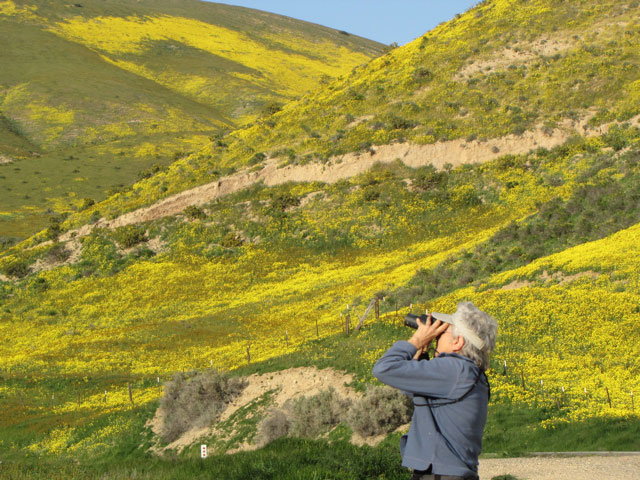Clair Camp, an abandoned mining area, is a junk pile. We particularly noticed the tanks marked "Cyanide-Poison". Glad we were carrying our own water. By 4:30 p.m., having gained about 3000 feet, we stopped at the cabin at the World Beater Mine about 4000' below Porter's summit.
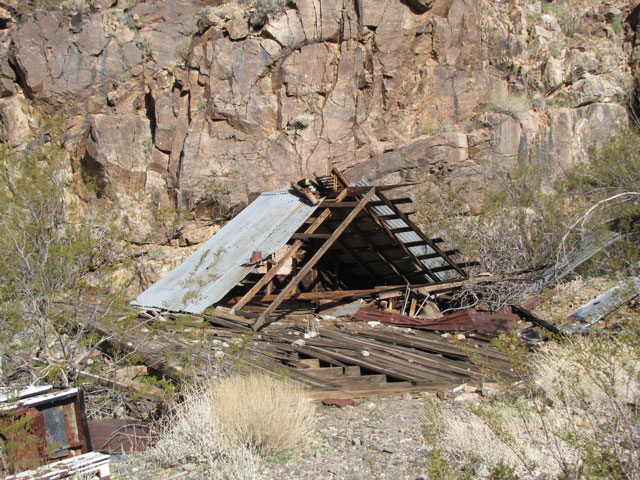
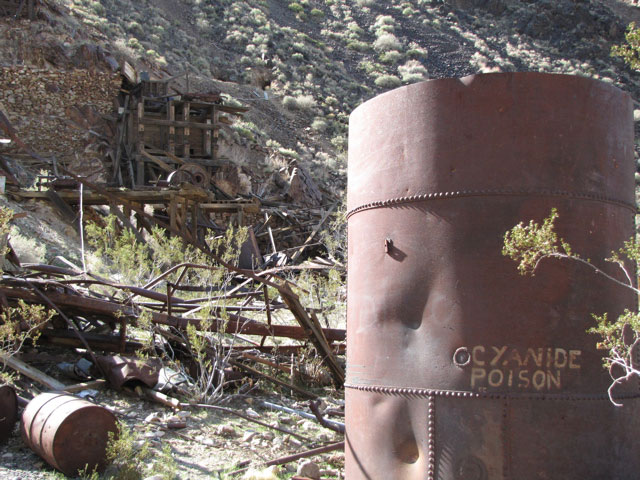
Death Valley cabins are available for use on a first come, first serve basis. This one is maintained by CORVA (California Off Road Vehicle Association). Some of these off-roaders are fine people; others are total yahoos, tossing beer cans from their vehicles, shooting pistols and leaving their shells on the ground, and driving on fragile habitat.
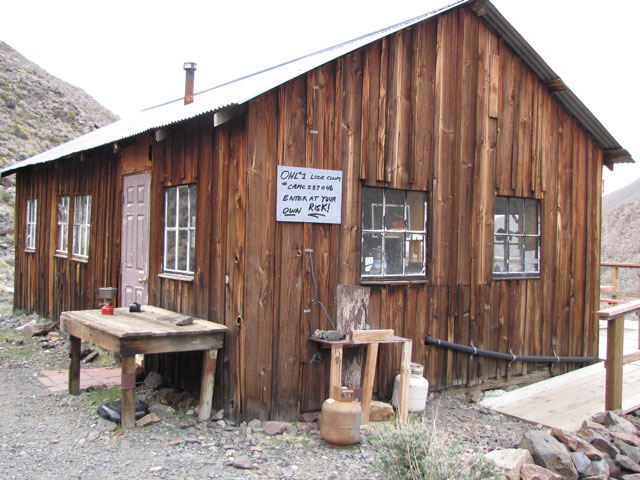
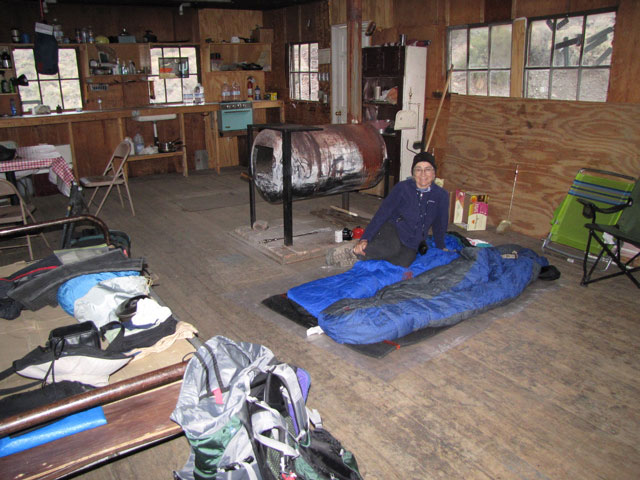
That night the mice kept waking us up as they chomped down food left out by the previous cabin occupant. You can be sure I cleaned thoroughly before we spent another night.
We left at 6:30 a.m. the next morning and took about an hour to hike up to the Copper Mine road. There was continuous snow from about 8500'. Then back to the cabin for another night and the next day a lovely hike out.

After our backpack we camped at Furnace Creek meeting a delightful couple from Colorado who shared their campfire ring with us. We had the wood and they had the fire pit. We had marshmallow peeps; they had graham crackers and Hershey bars. What a team!
The next morning we headed for Ash Meadows just over the state line in Nevada to see the pupfish after checking out their cousins at Salt Creek in Death Valley. The male fish were bright blue (breeding color) and very interesting. They are remnants from 10,000 years ago when Death Valley was Lake Manley.
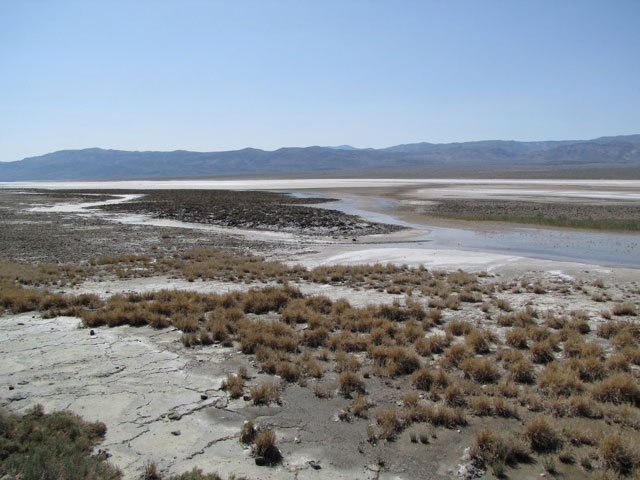
That evening we stopped at the Amargosa Opera House and stayed at the Amargosa Hotel which is on the National Historic Register. Both the opera house and the hotel are adorned with the paintings of Marta Becket, now 85, who still puts on a show for tourists. In the 1960s and 70s when she had no audience, Becket painted one on the walls of the opera house.
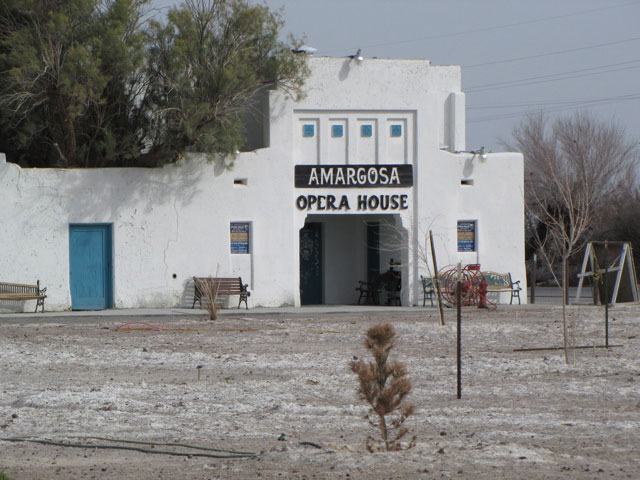
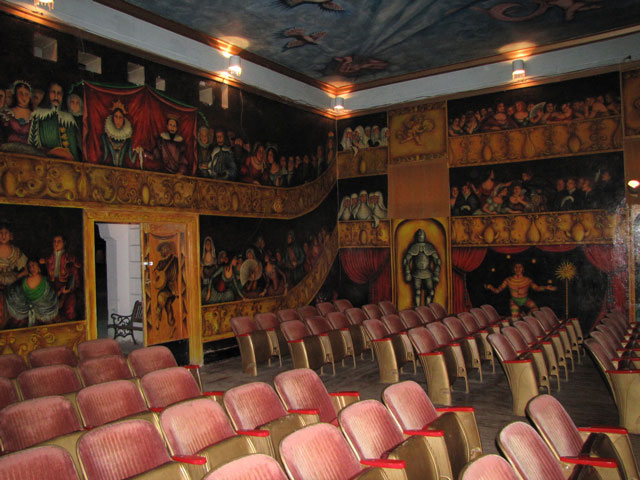
Then it was on to climb Jubilee Mountain, (2527') a short but slippery ascent to a spectacular view. Driving down from Jubilee Pass took a while because we stopped often to see the wildflower display: Desert sand verbena, Desert sunflowers, and purplemat, among others. But the most extravagant displays came on the drive home when we stopped at the Poppy Reserve in Lancaster and along Highway 58 east of Bakersfield. In addition to acres of California poppies and Goldfields, we saw huge tracts of white Tidy Tips, and expanses of Owls Clover, Shooting Stars, Phacelia, and Fiddleneck.
The most exciting wildflower quest came before we left the Panamints in Death Valley NP. We searched for and found the elusive Panamint Daisy which although not endangered, grows in very few places. We scanned hillsides, tramped up canyons and discovered only one spot where they grew. Frustratingly, most were about a week from blooming. The two that were partly open were high on a very steep slope. Despite repeated attempts to climb up or down to them, we deemed them too dangerous to reach.
The Panamint Daisy is very showy; it has 5-inch wide yellow flowers and is the symbol of the California Native Plant Society. We'll be back.
